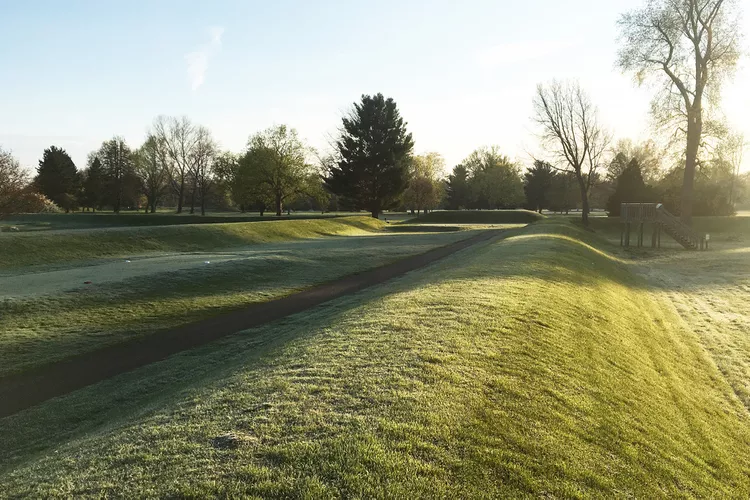Summary
See America’s newest treasure.
In September, the UNESCO World Heritage Committee convened to unveil the latest destinations to make its World Heritage List. Moreover, there’s a brand-new addition right here in the U.S.
UNESCO officially named Hopewell Ceremonial Earthworks, a prehistoric structure found in the middle of Ohio, to its list. This marks the first inclusion from the states since the U.S. rejoined UNESCO in 2023.
According to UNESCO, “This property is a series of eight monumental earthen enclosure complexes built between 2,000 and 1,600 years ago along the central tributaries of the Ohio River. They are the most representative surviving expressions of the Indigenous tradition now referred to as the Hopewell culture.”
The scale of the eight monuments, UNESCO emphasized, is remarkable. “The Great Pyramid of Cheops would have fit inside the Wright Earthworks,” the organization added. NPR explained that the mounds range in height from three to more than 30 feet and stretch for miles. Additionally, UNESCO noted that the structures likely served as “ceremonial centers,” as evidenced by the finely crafted ritual objects made from raw materials sourced from distant locations.
According to Cincinnati.com, the initiative to include the earthworks in UNESCO’s list was led by preservation groups such as the Ohio History Connection, the National Congress of American Indians, and the Inter Tribal Council, which represents nations in Northeast Oklahoma and the Seneca Nation of New York State.
Megan Wood, the executive director and CEO of the Ohio History Connection, stated, “Inscription on the World Heritage List will call international attention to these treasures long known to Ohioans.”
Want to visit America’s newest UNESCO site? Here’s how to plan a visit.
:max_bytes(150000):strip_icc():format(webp)/TAL-hopewell-ceremonial-earthworks-gateway-eagle-mound-OHUNESCO0923-e0d5cec5b3774bda83fad982584d9e43.jpg)
Where are the Hopewell Ceremonial Earthworks?
There are eight sites that are part of the Hopewell Ceremonial Earthworks, including Fort Ancient Earthworks and Nature Preserve, Mound City Group, Hopewell Mound Group, Seip Earthworks, High Bank Earthworks, Hopeton Earthworks, Newark Earthworks, and Hopewell Culture National Historical Park (which consists of five geographically separate elements). The easiest access may be through Hopewell Culture National Historical Park, located in Chillicothe, Ohio, a town approximately an hour’s drive from Columbus, which has a high concentration of the mounds. For more information, see a map of the mounds in the park to plan your visit here.
When to Go
The park, according to the National Park Service (NPS), is visited by approximately 58,000 people every year, with its peak season occurring between March and October. If you prefer fewer crowds, consider visiting in the shoulder seasons, either just after the New Year or in late fall. However, it is essential to note that it can be chilly during these times (between 40-50 degrees), so ensure you wear a coat. The park remains open daily from sunrise to sunset.
Is there a visitor’s center?
There is one visitor center for the mounds, located at Mound City Group, 16062 State Route 104, Chillicothe, OH 45601. It operates every day from 9:00 a.m. to 4:00 p.m., except on major holidays.
Is the park accessible to all?
The park offers interpretive trails designed to be accessible for visitors with disabilities. However, the park advises caution as trails may be slightly uneven due to surfaces composed of grass, gravel, and wood chips. A first-come, first-serve, off-road wheelchair is available for use at the visitor center.
How much does it cost?
Visiting the park is always free of charge.
Can I camp?
While there is no camping available at the park itself, you can find nearby sites by visiting recreation.gov. Furthermore, a number of hotels are located nearby for comfortable accommodations.
Is there more to see?
Indeed, there are additional mounds located outside the park. To explore all the mounds and their locations, visit npshistory.com.




